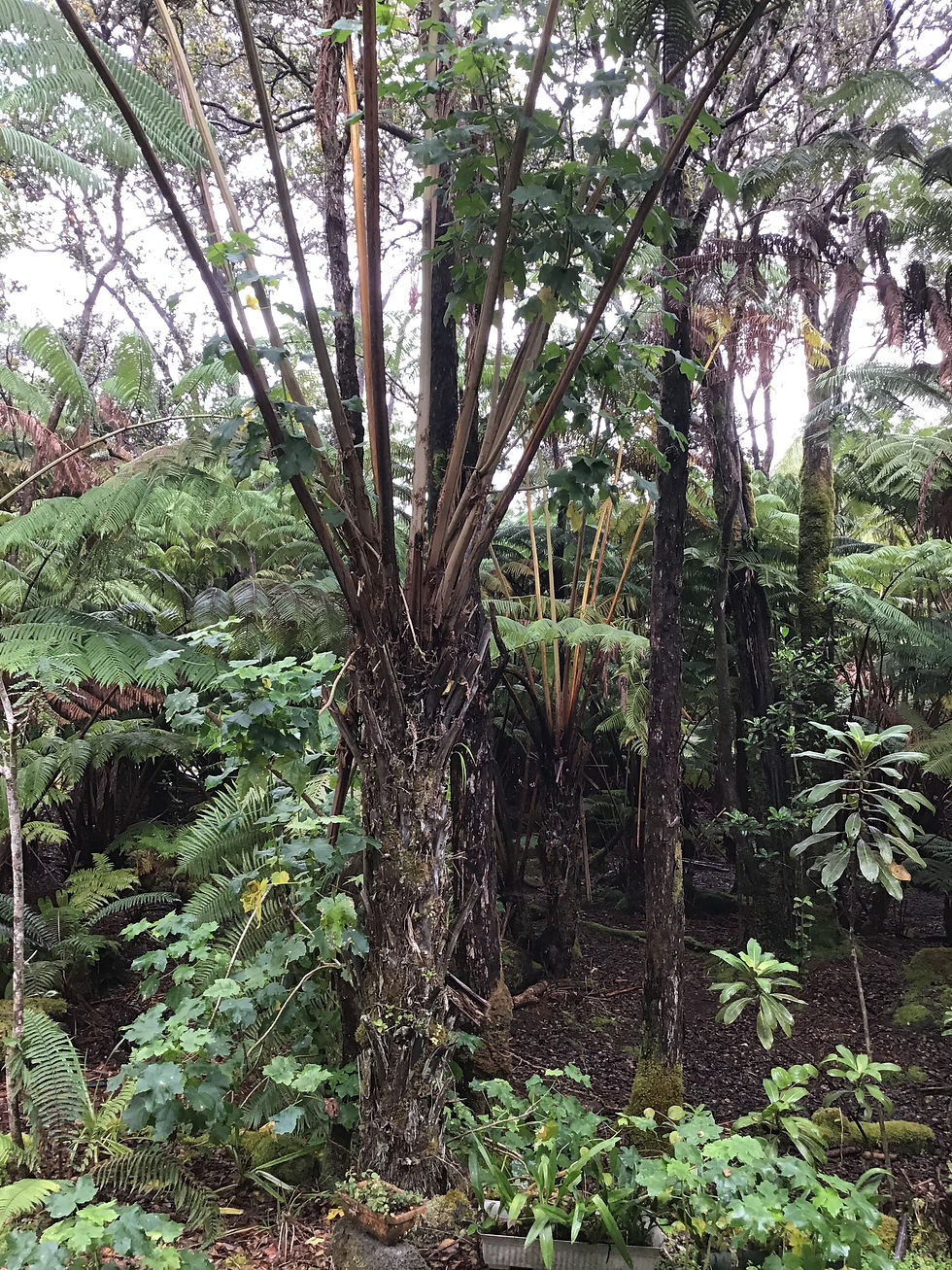
Hawaii’s tree ferns are the gentle giants of our rain forests. Massive and shaggy, often leaning at scary angles, they tower and sway above us like a T. rex of the plant world. In fact, being a fern, they do have their roots in that age. Unlike dinosaurs however, our hapu’u are gentle in their consideration of all the other plants. They bring shade. They bring moisture. They even bring territory—other plants get their start on them. All a hapu’u has to do is lean a bit so the sun can angle in and a clermontia will jump on it. And when a hapu’u leans all the way to the ground, we declare it a nurse log because of the number of plants that start feeding off it.
Do you have hapu’u falling down in your yard? That’s how they get around. They’re called the walking ferns for that reason. But in their gentle way, they give us full warning by leaning for years beforehand. Sometimes people will prop them up with crutches to keep them upright. If they do fall, all is well and good as they carry on by sending their new fronds in a skyward direction.
If you look carefully, you might notice three different species of Cibotium, which is the genus name for Hawaii’s tree ferns. The great majority are hapu’u (Cibotium glaucum) with its soft brown hair called pulu and leaves with a whitish underside. Another is hapu’u i’i (Cibotium menziesii) which has stiff dark brown to dark purple hairs and leaves with a light green underside. The odd one is the meu (Cibotium chamissoi) which is not common and so easily missed. It is distinguished by what it doesn’t have—the bases of old fronds. You can find meus in the Niaulani nature walk.
Hapu’u are forest plants, not horticultural plants, but people in Volcano do use them in landscaping. Some lay down the massive trunks as borders, which can become very decorative with mosses and seedlings. And others use them to form small kipukas in their lawns to shade smaller plants. There is a tendency to cut the hapu’u fronds when they start to turn brown, but it is best to leave them (at least until you can’t stand it any longer), as the fronds are sending nutrients back to the core. Yes, it does look a bit shaggy, just like our forest, but it’s best not to be too severe. Think of it as shaggy chic.
Comments